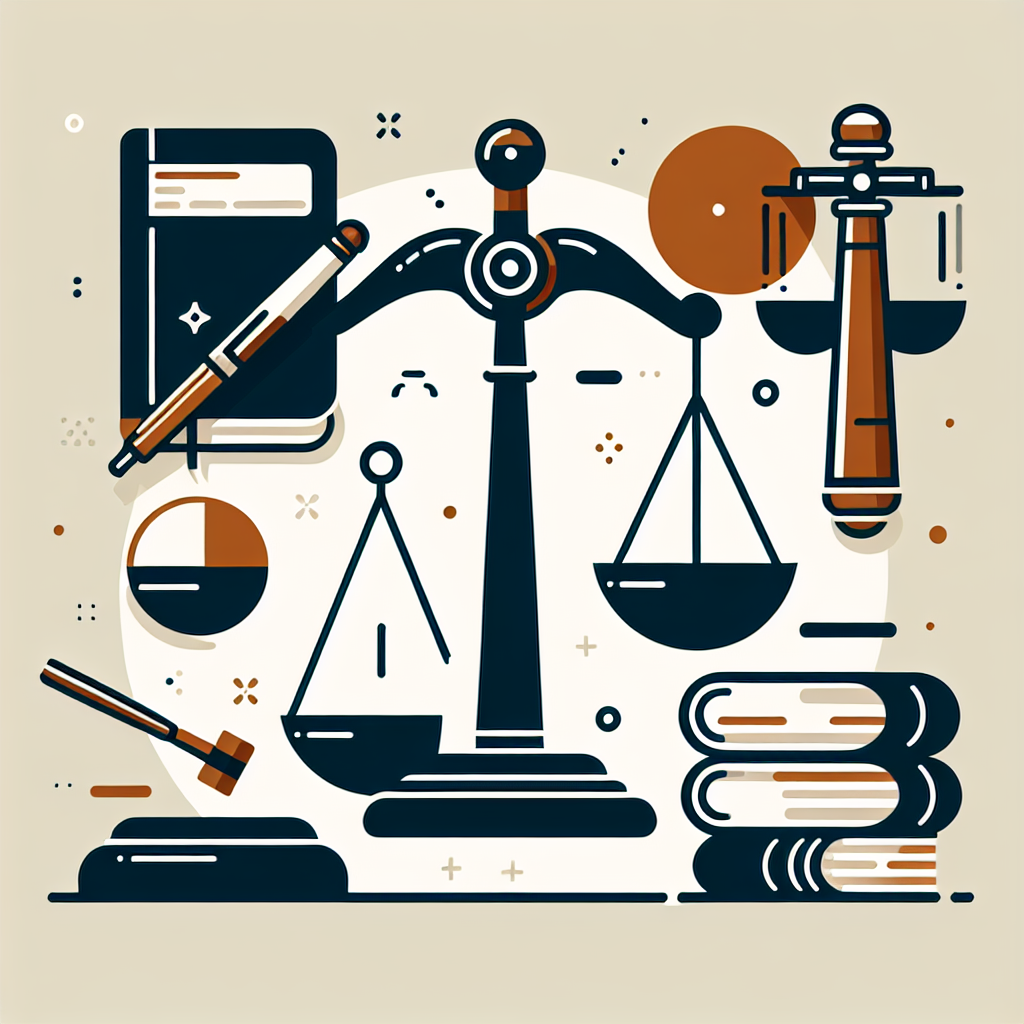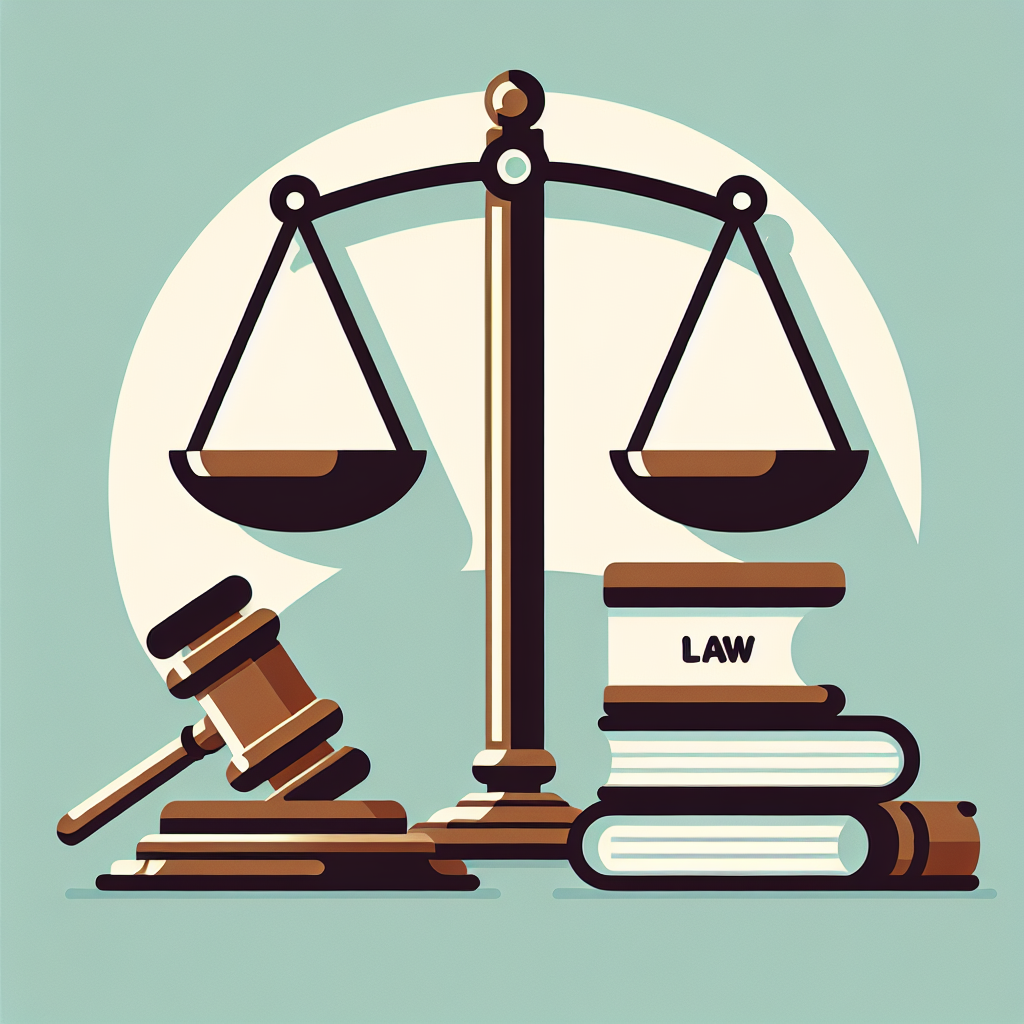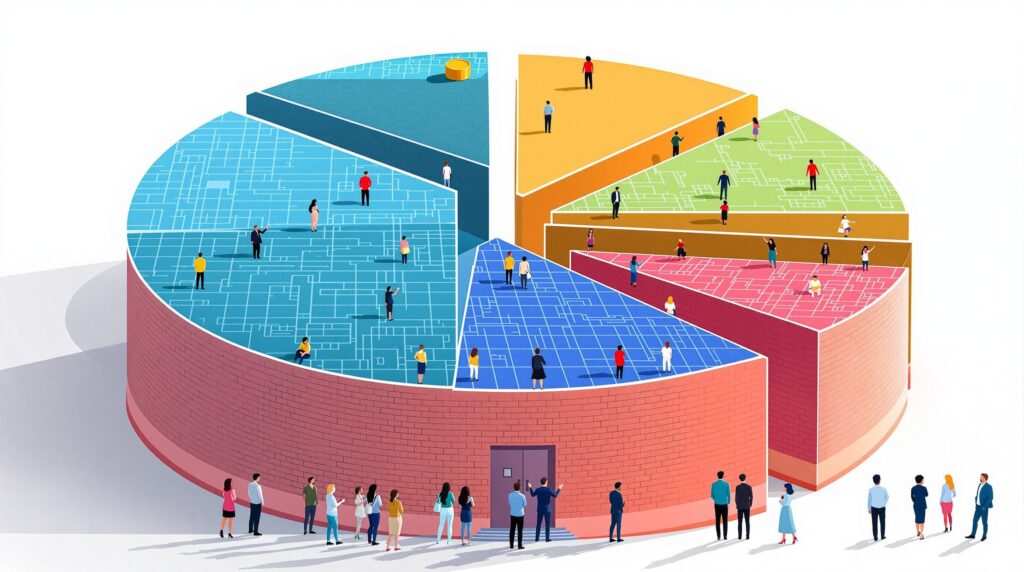[rev_slider alias=”slider-1″][/rev_slider]
Introduction to Layer 1 Blockchains
As the digital and technological landscape continues to evolve, the blockchain sector remains a pivotal area of growth and innovation. Understanding the foundational elements of blockchain technology, particularly Layer 1 blockchains, is essential for anyone keeping an eye on future developments in this space. Here, we explore what Layer 1 blockchains are, their pivotal role in the wider ecosystem, and why they are worthy of attention.
What are Layer 1 Blockchains?
Layer 1 blockchains form the backbone of the cryptocurrency network architecture. But what exactly makes a blockchain a Layer 1 solution? Essentially, these blockchain protocols develop and improve the base level protocol itself to enhance overall performance and scalability.
Layer 1 solutions are the underlying networks upon which various cryptocurrencies and applications operate. They include well-known cryptocurrencies like Bitcoin and Ethereum.
Some key characteristics of Layer 1 blockchains include decentralized consensus mechanisms, such as Proof of Work (PoW) or Proof of Stake (PoS), which help secure the network and validate transactions. Additionally, these blockchains are capable of making modifications to their protocols to accommodate more transactions, reduce fees, or improve transaction speed without relying on a second layer.
Improving network scalability often involves significant changes in the Layer 1 protocol, including:
- Forking: A radical change to the blockchain’s protocol that creates two separate paths — one that follows the new, upgraded path, and another that continues along the old path.
- Consensus Protocol Changes: Altering the fundamental rules by which the network reaches consensus on the validity of transactions.
- Sharding: This technique splits the network into smaller chunks or “shards” capable of processing transactions in parallel, significantly increasing throughput.
Fascination with these technological underpinnings has led to a rapidly growing interest in several emerging Layer 1 projects that promise not only to support the decentralized ambitions of the crypto world but also enhance transaction efficiency and security.
In the next section, we’ll delve deeper into the specifics of these emerging technologies, highlighting the top five Layer 1 blockchains that are not just surviving but thriving within the competitive crypto environment. Understanding the mechanics, advantages, and potential of these platforms will offer valuable insights into the future trajectories of digital finance and decentralized applications.
Top 5 Emerging Layer 1 Blockchains to Watch
In the rapidly evolving world of blockchain technology, Layer 1 solutions form the backbone of this transformative landscape. These platforms are not just digital currencies but robust ecosystems that support various applications, smart contracts, and innovations. Here, we dive deep into the top 5 emerging Layer 1 blockchains that are poised to significantly impact the industry. Each of these platforms brings unique features, advancements, and a strong potential for scalability, making them prime candidates for your watchlist.
1. Solana: High-Speed Blockchain Innovation
Background: Solana is known for its remarkable speed and efficiency, positioning itself as a direct competitor to more established blockchains like Ethereum. It achieves this with a unique hybrid consensus model that combines proof-of-history (PoH) with proof-of-stake (PoS).
Key Features: Solana boasts an impressive throughput of 50,000 transactions per second (TPS), largely due to its innovative PoH consensus, which timestamps transactions before they are processed, drastically reducing validation time. This high throughput makes Solana an attractive platform for decentralized applications (DApps) requiring quick transaction times, such as decentralized exchanges, gaming, and NFT marketplaces.
Solana’s hybrid protocol and lightning-fast transaction times not only enhance its scalability but also reduce transaction costs, making it a highly efficient blockchain solution.
2. Polkadot: Interoperability at Its Finest
Background: Polkadot stands out with its core feature of interoperability, allowing multiple blockchains to connect and communicate seamlessly. This “blockchain of blockchains” is designed to solve a pivotal problem in the blockchain ecosystem: isolated and siloed networks.
Key Features: Polkadot facilitates an internet of interoperable blockchains by enabling cross-chain transfers of any type of data or asset. By connecting to Polkadot’s network, different blockchains can maintain their unique properties while ensuring trustless exchanges and communication via Polkadot’s relay chain.
With Polkadot, the boundaries between distinct blockchains blur, paving the way for innovative cross-chain applications and enhanced usability.
3. Cardano: A Research-Driven Blockchain Approach
Background: Cardano differentiates itself with a strong emphasis on a research-first driven approach, prioritizing security and sustainability. It was founded by Charles Hoskinson, one of the co-founders of Ethereum, and aims to balance the needs of users with those of regulators, combining privacy with regulation.
Key Features: Cardano uses a unique PoS algorithm called Ouroboros, which not only decreases energy consumption but also increases transaction speed without compromising security. A notable aspect of Cardano is its two-layer network structure that separates the ledger of account values from the reasoning behind the movement of values from one account to another.
Cardano’s layered architecture not only increases efficiency but also allows for more flexible, future-proof updates, and interoperability among other cryptocurrencies.
4. Avalanche: Ultra-low Latency Blockchain
Background: Avalanche is rapidly garnering attention due to its ultra-responsive platform capable of finalizing transactions in under one second. This high-performance, scalable, and secure blockchain is ideal for decentralized applications and custom blockchain networks.
Key Features: It operates on a novel consensus protocol that achieves high throughput and quick finality. Avalanche supports the creation of both private and public blockchains, each customized to specific needs and also interoperable with other blockchains within the Avalanche ecosystem.
Avalanche’s unique consensus mechanism significantly diminishes latency, provides greater throughput, and ensures more robust security.
5. Algorand: Pure Proof-of-Stake and Scalability
Background: Algorand is designed to speed up transactions and improve efficiency, in a bid to achieve the scalability demands placed on modern financial systems. This pure proof-of-stake (PPoS) blockchain eliminates the possibility of forking and ensures full participation, protection, and speed within a truly decentralized network.
Key Features: Algorand’s PPoS approach ensures full user participation and equal weight to all users in the consensus of the network. This setup reduces the environmental impact compared to traditional proof-of-work systems and ensures quick transaction finality without sacrificing security.
Algorand’s innovation lies in its user-centric security model and its scalable, efficient framework, which facilitate wider adoption and technological evolution.
These Layer 1 blockchains are not just surviving in a competitive field but are paving the way for the next generation of blockchain innovation. With each offering distinguishable solutions to the blockchain community, they provide valuable opportunities for investors, developers, and users alike.
[rev_slider alias=”text-call-cta”][/rev_slider]
Comparing Layer 1 and Layer 2 Solutions
Understanding the differences and advantages between Layer 1 and Layer 2 blockchain solutions is central to grasping modern cryptocurrency infrastructure enhancements. Layer 1 consists of the underlying main blockchain architecture, whereas Layer 2 is an overlay network that lies on top of the existing blockchain, aiming to enhance its scalability and efficiency.
Layer 1 vs. Layer 2: A Quick Overview
At the core, the primary distinctions between Layer 1 and Layer 2 solutions revolve around scalability, speed, security, and use cases. Let’s delve deeper into each aspect to see which layer might suit different needs in the blockchain and cryptocurrency landscapes.
Scalability and Speed: Layer 1 solutions involve changes to the main blockchain protocol itself to increase the network’s capacity. Examples include increasing block size or altering the consensus protocol. On the other hand, Layer 2 solutions like Lightning Network for Bitcoin or Raiden Network for Ethereum, operate on top of the blockchain to achieve higher transaction throughput without modifying the main blockchain protocol.
Layer 1 enhancements are often harder to implement as they usually require vast consensus from the network’s participants. In contrast, Layer 2 solutions can be adopted more flexibly and swiftly, providing immediate relief to scalability issues by handling transactions off the main ledger (off-chain).
Use Cases: While Layer 1 can be considered the foundation of blockchain tech, providing the ground rules and initial architecture, Layer 2 offers more specialized solutions tailored for specific problems like microtransactions or fast-trading scenarios.
Security Aspects: Since Layer 2 solutions are dependent on the underlying Layer 1 blockchain, they inherit a substantial part of their security properties from it. However, they also need to implement their own security measures to safeguard off-chain transactions.
Among the advantages, Layer 2 solutions typically offer lower transaction fees, thanks to the off-chain processing of transactions, which cuts down the burden on the main blockchain. This not only speeds up the transaction process but also makes microtransactions viable—a key advantage for everyday blockchain use and something that Layer 1 solutions typically struggle with due to higher operational costs.
However, the reliance on the main chain for ultimate settlement in Layer 2 solutions can also be a drawback. Finality on Layer 2 is dependent on the Layer 1 blockchain’s speed and congestion levels, which can lead to delays in finalizing transactions during peak times.
Which to Choose: Your selection between Layer 1 and Layer 2 solutions should align with your specific needs. For foundational blockchain services and enhancements at a fundamental level, Layer 1 changes are essential. For specific applications requiring high speed and scalability, like gaming or frequent small transactions, Layer 2 provides effective solutions.
In summary, while Layer 1 is foundational and involves changes at the root level—often improving security and decentralization—Layer 2 builds on these to offer faster, more cost-effective solutions tailored to specific needs. Both layers are crucial for the blockchain’s evolution, each playing a unique role in the ecosystem’s development.
As we continue to push the boundaries of what blockchain technologies can achieve, understanding and leveraging both Layer 1 and Layer 2 solutions will be key to unlocking their full potential, ensuring robust, scalable, and efficient systems.
The Future of Layer 1 Blockchains
As we usher in an era dominated by technological advancements, the significance of blockchain technology continues to grow, impacting various industries worldwide. Within this evolving landscape, Layer 1 blockchains are emerging as foundational components that ensure scalability, security, and sustainability. Let’s delve into predictions and trends for these blockchains in the coming years and gauge why they are crucial for investors and tech enthusiasts alike.
Increased Focus on Scalability Solutions
One of the primary challenges faced by current Layer 1 blockchains like Bitcoin and Ethereum is scalability. As more users and transactions flood these networks, the need for scalable solutions becomes paramount. In the coming years, we can anticipate a significant shift towards enhancing scalability through innovative consensus mechanisms and layer 2 solutions like Lightning Network and Plasma. These developments are not merely technical upgrades; they represent a pivotal evolution in blockchain’s ability to handle massive transaction volumes efficiently.
- Consensus Mechanisms: New consensus algorithms, such as Proof of Stake (PoS), are gaining traction over the traditional Proof of Work (PoW) due to their lower energy consumption and higher transaction speed.
- Sharding: Techniques like sharding, where a blockchain is divided into smaller, manageable parts, are also set to take center stage, thereby elevating transaction throughput dramatically.
Enhanced Interoperability Among Blockchains
The future of Layer 1 blockchains also lies in interoperability—the ability of different blockchain networks to communicate and transact seamlessly. Interoperability enhances the overall efficiency of the blockchain ecosystem, enabling cross-chain transactions and data exchanges, which are vital for the multi-chain realities of the future. Projects like Polkadot and Cosmos are at the forefront, developing protocols that allow diverse blockchains to interact without intermediaries.
Regulatory and Security Advancements
As blockchain technology matures, regulatory clarity and security measures will become increasingly sophisticated and integral to the growth of Layer 1 blockchains. Governments and regulatory bodies worldwide are beginning to recognize the potential benefits and risks associated with blockchain technology, leading to more concrete frameworks and guidelines for its development and use. Enhanced security protocols and innovative encryption methods will also emerge, making Layer 1 blockchains more robust and trustable.
Rising Adoption in Diverse Industries
The versatility of Layer 1 blockchains will drive their adoption beyond fintech into myriad sectors such as healthcare, supply chain management, and even governance. The inherent characteristics of decentralization, immutability, and transparency make Layer 1 blockchains ideal for applications that require secure, traceable, and efficient transaction records. This widespread adoption will likely lead to more specialized blockchains tailored to specific industry needs, enhancing efficiency across various sectors.
Focusing on Environmental Sustainability
The environmental impact of blockchain technology, particularly the energy-intensive nature of some Layer 1 solutions, has been a point of contention. Moving forward, there will be a heightened focus on developing environmentally sustainable blockchains. This will involve not only shifts towards energy-efficient consensus algorithms like PoS but also the integration of blockchain technology with other green technologies to reduce the carbon footprint of mining and transaction processing.
In conclusion, the future of Layer 1 blockchains holds remarkable potential for transformation across numerous landscapes. From scalability and interoperability enhancements to increased regulatory clarity and broader sectoral adoption, these developments promise to fortify the foundational layer of the blockchain ecosystem significantly. For investors and industry participants, staying informed about these trends is not just beneficial—it’s imperative for making strategic decisions in a rapidly evolving digital world.
Layer 1 blockchains are not just the backbone of the cryptocurrency world but also the stepping stone towards a decentralized, transparent, and efficient digital future.
Understanding these emerging blockchains and their trajectories helps in identifying investment opportunities and anticipating the direction of future technological advancements. As we move forward, the integration of blockchain technology into everyday business processes and personal transactions will become more pronounced, making an in-depth understanding of these platforms more valuable than ever.
[rev_slider alias=”schedule-consultation-btn”][/rev_slider]


Explore Related Practice Areas
Explore additional practice areas to further understand our comprehensive services:
| Case Type One | Case Type Two |
| Case Type Three | Case Type Four |
| Case Type Five | Case Type Six |
| Case Type Seven | Case Type Eight |
Top-Rated Layer 1 and Layer 2 Blockchain Solutions Attorneys Serving Jara
Choosing the right legal representative is crucial when dealing with complex blockchain technologies. Our seasoned and committed attorneys ensure you’re well-informed and prepared at every stage.
- Attorney John Doe
- Attorney Jane Smith
- Attorney Bob Lee
- Attorney Lisa Ray
Hear From Our Satisfied Clients
At the forefront of our practice, we are committed to client satisfaction. Each case receives our full attention, reflecting in the positive feedback from those we represent.

[rev_slider alias=”slider-3″][/rev_slider]
[rev_slider alias=”slider-6″][/rev_slider]
Explore the Future with Our Award-Winning Blockchain Expertise
As we’ve navigated through the promising realm of emerging Layer 1 blockchains, it’s clear that staying ahead in this technology is pivotal. But why just read about it when you can directly engage with leaders in the field?
At Jara, we don’t just follow trends — we set them. Our dedicated team is at the forefront of blockchain solutions, driven by innovation and recognized excellence. Here’s what the industry says about our expertise:
| Award | Organization | Year | Criteria | Link |
|---|---|---|---|---|
| Listed among the “Top Blockchain Technology Providers” | Tech Innovators | 2023 | Innovation in blockchain solutions | Link |
| Highlighted among “Top Tech Startups” | Startup Watch | 2023 | Innovative business models and technologies | Link |
| Named as one of the “Leaders in Blockchain Innovation” | Tech Leaders Globally | 2023 | Pioneering new blockchain technology | Link |
Ready to navigate the blockchain landscape with a partner that’s both recognized and reliable? Dial 000-000-0000 or drop a message at [email protected] today. Don’t just watch the future happen — be a part of it with Jara.
About the Author
John Doe is a seasoned financial analyst and blockchain enthusiast with over a decade of experience in the tech industry. Specializing in emerging technologies, John brings a deep understanding of blockchain advancements and investments. His insights into Layer 1 solutions are highly sought after by businesses looking to integrate blockchain for enhanced security and efficiency.
















